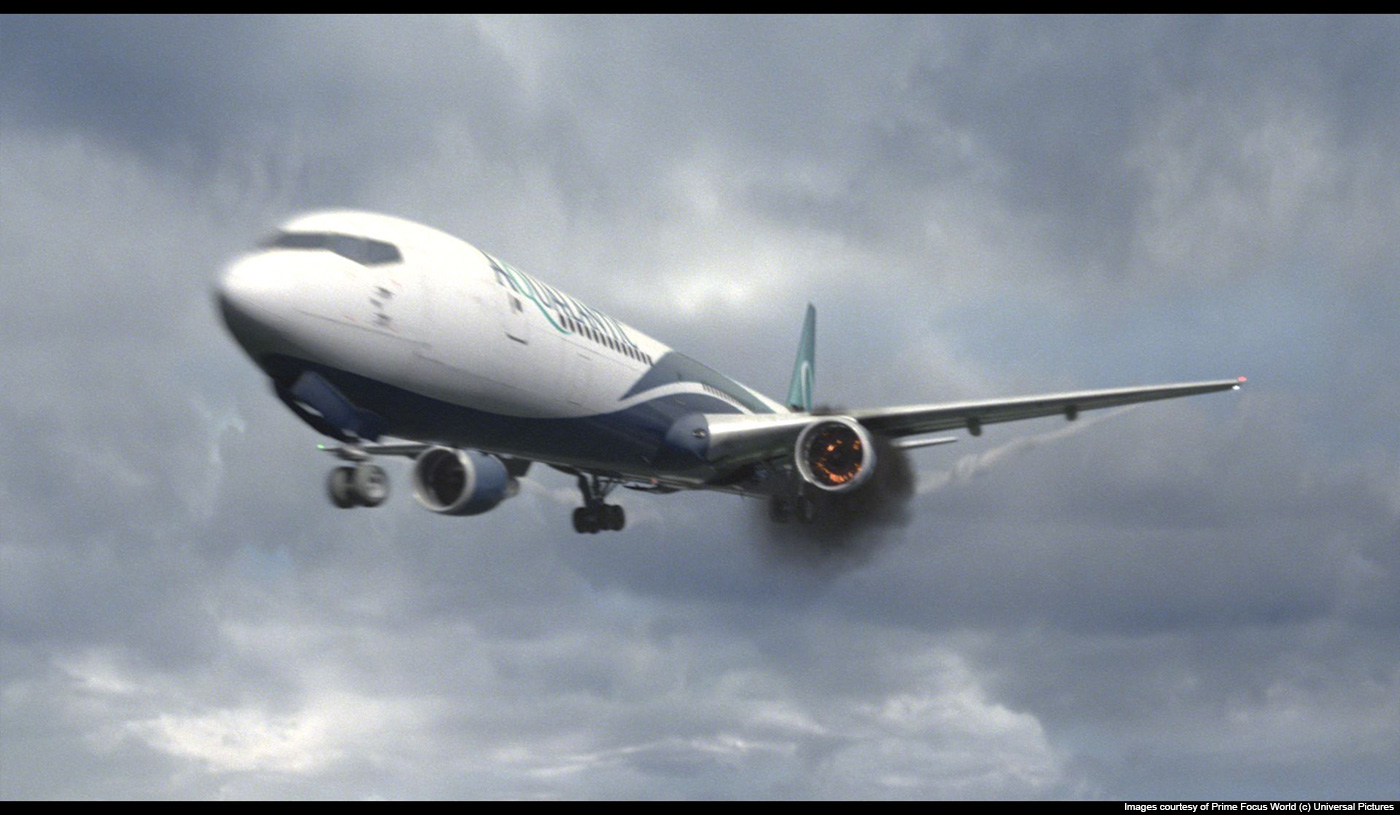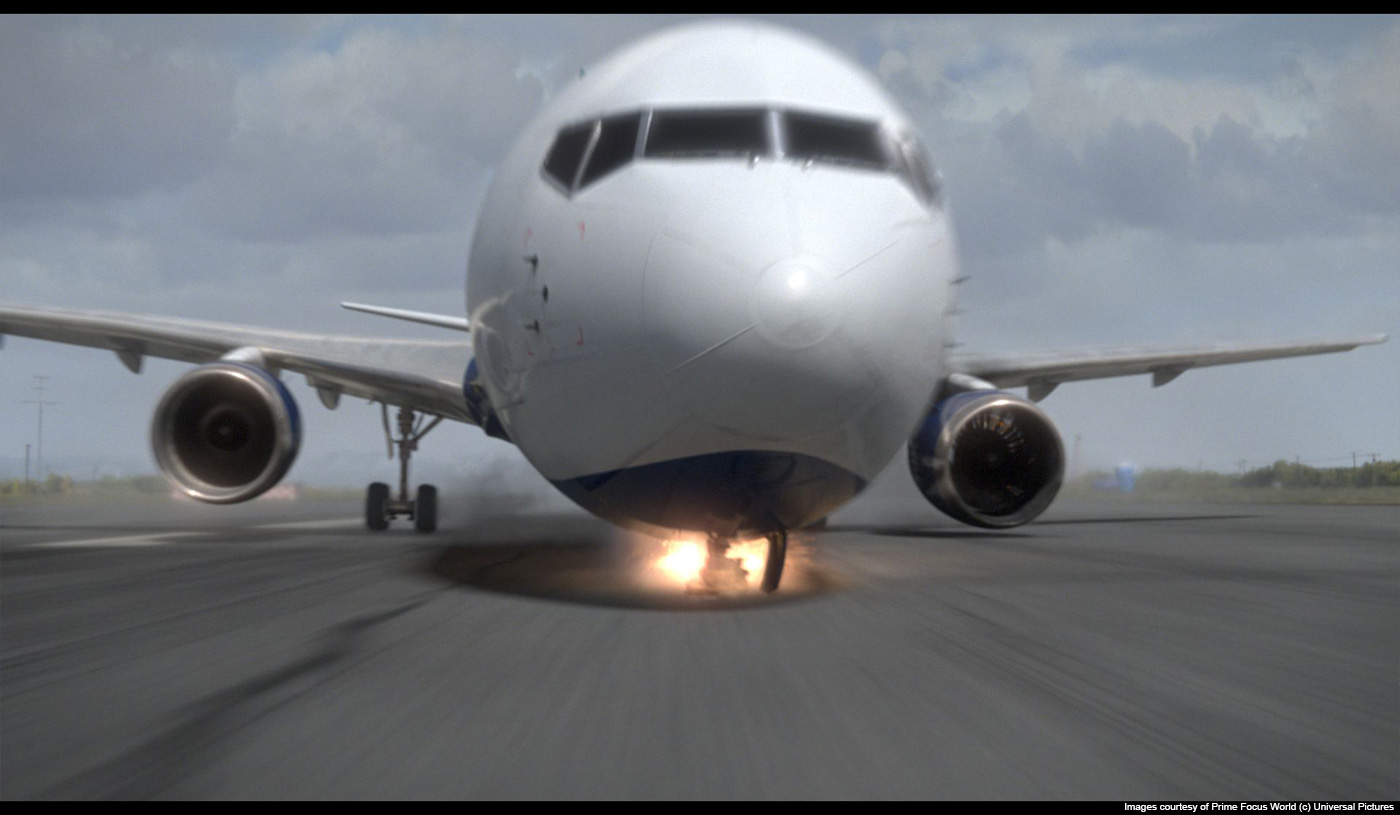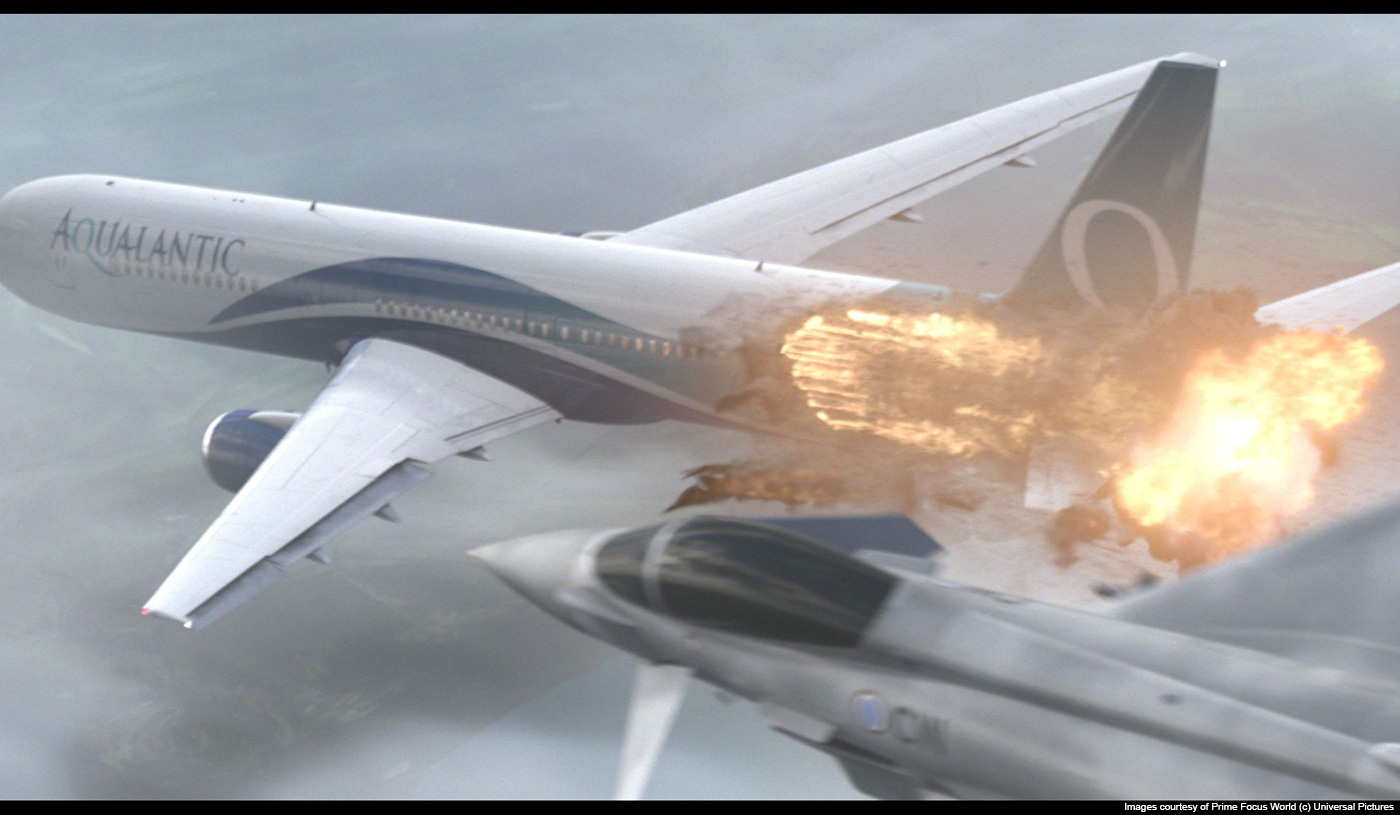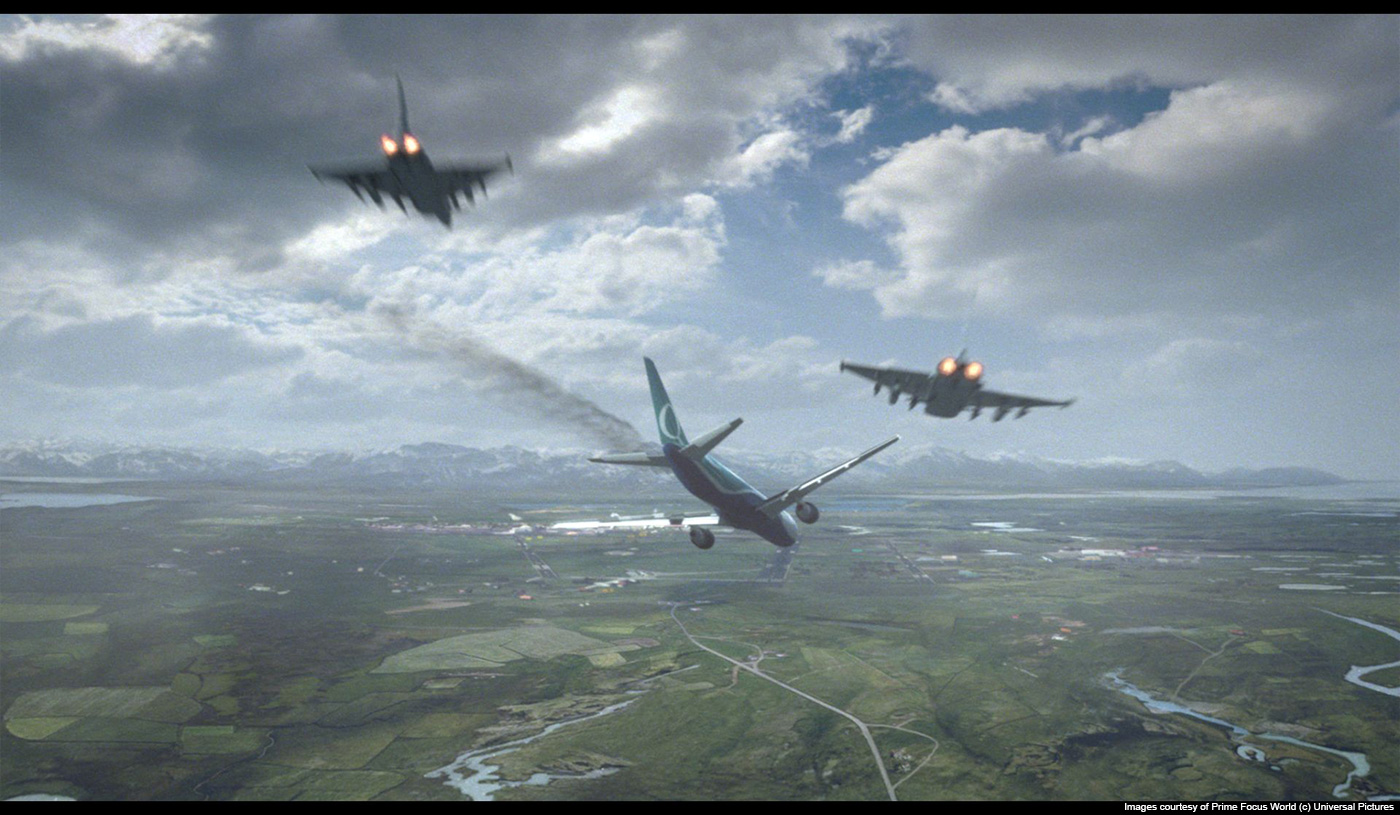Randy Goux is in visual effects for over 16 years. He has worked in many studios around the world and has worked on various projects such as X-MEN, CONSTANTINE, PATHFINDER or RED.
What is your background?
I’m a VFX Supervisor at Prime Focus World in Vancouver. I’ve been in the business for over sixteen years, and I’ve worked for companies such as Weta Digital, Method / CIS, ESC Entertainment and more. Some of the previous shows I have worked on include A GOOD DAY TO DIE HARD, ABRAHAM LINCOLN: VAMPIRE HUNTER, SERENITY, THE MATRIX RELOADED and REVELATIONS, and THE LORD OF THE RINGS: THE FELLOWSHIP OF THE RINGS.
How did Prime Focus get involved on this show?
Prime Focus World has a great working relationship with Silver Pictures – we’re also currently working on Pierre Morel’s THE GUNMAN for them, over in our London studio. We were brought on board as the exclusive VFX partner on NON-STOP through our relationship with Joel Silver and Silver Pictures.
How was the collaboration with director Jaume Collet-Serra?
Jaume was very clear in his priorities – the story always comes first, which is a great way to work. So for every sequence, we would ask ‘How does this shot help the story?’ First and foremost, NON-STOP is a very suspenseful ‘whodunnit’ – and part of our job was to help the director achieve this suspense and tension.
What was his approach about the visual effects?
To a great extent, because Jaume was so concentrated on the story, he gave us free rein to design the sequences we were creating. We handled all the art direction of the exterior CG sequences in the show, coming up with the look and then sharing with the filmmakers to clarify the direction. Production would also share references with us for specifics, such as the escape raft blowing out of the plane. It was a good collaboration.
Can you describe one of your typical days in post?
There’s a lot of energy in the studio. As much as our lives rely on email and online chats, I spend most of my days swarming the floor and getting as much face time with the artists as I can. It’s kind of like the floor of the Stock Exchange, except we make pictures and blow stuff up…
Did you receive any specific indications and references from the director for the plane?
As I mentioned above, we really art directed the exterior shots, including the design of the plane, the jet fighters that are dispatched to accompany it, and the environments.
Can you explain in details about the plane creation?
The Boeing was a standard plane model, built with enough detail to hold up at shot specific angles. There are some specific moments in the film where a couple of holes are torn into the sides and the engine and landing gear and torn off. That required some extensive work between the modeling team and the FX crew to create the destruction debris.
Can you tell us more about the texturing and lighting work?
Although you would think the lighting would be straight forward, with having just the sun and a plane to deal with, we found ourselves adding many optical elements to add to our virtual cinematography. Carefully placed glints, subtle shadows as we dive through clouds, in lens light blooming were all parts of the composition.
How did you handle the cloud creation?
Clouds are fun. Everybody loves clouds. Until you have to render clouds. We had to be very resourceful when it came to just which technique we were using per shot. If the camera was more of a nodal move, we relied almost solely on 2D projections in Nuke, supplemented by very basic volumetric particle wisps to add a necessary element of speed.
An explosion happens in the plane. How did you create it?
There are a few explosions that we had to tackle. One for inside the plane and a couple outside. Our FX team used Houdini to create the simulations for smoke and fire. We had to find the right balance between an explosion that was exciting enough for the film, but not “big” enough to take down the plane.
Can you explain more about the FX creation such as the fire?
Landing at the right simulation and shading of the fire elements is half the battle. Piling on 20-30 passes of rendered elements and debris to be used in comp is where the image sculpting really begins. Glowing heat and interactive light on objects in the scene are major cues for realism. The technical resolution of the fire rendered out of Houdini is a bar we are always raising at Prime Focus. With greater CPU power and more capable render farm, the limits get pushed every year.
Have you created previz for the landing sequence?
The “crash” landing was prevized out, but we added and changed a few shots toward the end of post to add some extra excitement to the moment.
Can you tell us more about the Iceland environment creation?
Iceland is a beautiful country. We based the airport on Keflavik, which is a coastal International Airport. Fairly low lying and flat, but some iconic mountain ranges in the distance, not unlike here in Vancouver.
What was the biggest challenge on this project and how did you achieve it?
I guess the first thing you would think of when discussing challenges would be the explosion on the plane, with all the debris, smoke and fire – but as VFX artists, that’s what we do everyday. I think the real challenge on this show was getting the cinematography of the CG shots to feel natural and authentic. We spent a lot of time looking at in-air footage of planes, focusing on how they were shot and replicating that feel in CG. This involved selecting the right lenses, perfecting the stabilization of the cameras, using the right shaders and getting the lighting looking perfect. We put a lot of effort into this.
Was there a shot or a sequence that prevented you from sleep?
Not that prevented me from sleep, but we did have a challenging 11,000 frames, seven and a half minute continuous shot to deal with. Jaume wanted the camera to travel through the economy cabin, past the flight attendants, through business / first class, into the cockpit, spin around and go back through the cabins, even going out through the window and traveling along the outside of the plane for a while. Obviously when it goes outside the cabin we’re into our CG environment, so we had to marry this up with the live action. For the viewer it is one continuous shot, but for us, it was multiple takes that we stitched together. I gave the shot to one of our senior compositors to look after – it was his baby. We knew it was going to be a big shot, and, once we had ironed out some technical wrinkles, it turned out very successfully. It just took a long time to render!
What do you keep from this experience?
The main things I take away from this experience are the real advantages of being the exclusive VFX partner on the movie. This really allows us to connect with the director and the other filmmakers – we were in constant communication with director, producer and editor, discussing what was working and agreeing the way forward. Justin Gladden (VFX Producer) and I flew out to New York to watch the movie with Jaume, and had a one-to-one with him. We were directly connected to anyone making decisions about the show, with no intermediaries, which is a very satisfying way to work.
How long have you worked on this film?
Five months.
How many shots have you done?
Our total count for NON-STOP was 474 shots.
What was the size of your team?
We had a team working on the show here in Vancouver, and also had our Mumbai studio working on it. The Mumbai team did a fantastic job on the roto and tracking, and also delivered most of the green-screen window replacements. The Vancouver team handled all the CG work.
What is your next project?
I’m currently working on a film called SOLACE, about a psychic who works with the FBI in order to hunt down a serial killer. Some fantastic shots that we’re pretty excited about.
What are the four movies that gave you the passion for cinema?
JURASSIC PARK – Best theater experience I’ve ever had…
CLOSE ENCOUNTERS – Master class in suspense…
STAR WARS – Sci-Fi made without a focus group…
THE BLACK STALLION – Every frame could be singled out and framed…
A big thanks for your time.
// WANT TO KNOW MORE?
– Prime Focus World: Dedicated page about NON-STOP on Prime Focus World website.
© Vincent Frei – The Art of VFX – 2014










